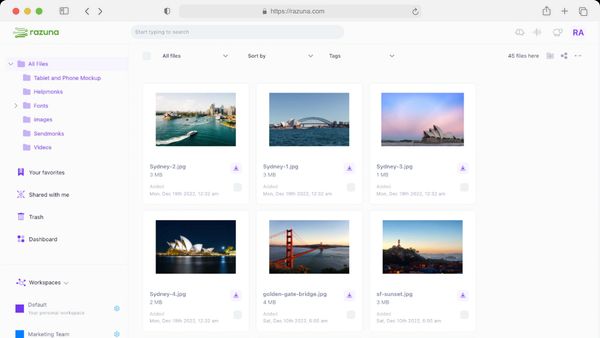
Announcing Collect+: Save and share everything
COLLECT+ is a productivity tool that helps you save and share everything you find on the web. It is built into the Razuna digital asset management platform.
Read nowBrand marketing is essential to the success of any business, big or small. It differentiates your products and services from other companies, builds customer connection and loyalty, and generates brand recognition that makes selling easier.
Your budget and your brand's existing reputation will largely dictate what sort of marketing you engage in. If you're a startup trying to make a name for yourself in a sea of competitors with limited resources, this can be a challenge.
But with the right strategy, anyone can master brand marketing regardless of budget constraints or experience. So, what is brand marketing, how does it differ from product marketing, and how can you create the perfect brand marketing strategy for your business?
Find out all you need to know in this step-by-step guide.
What is brand marketing all about? Branding is never a quick fix - it's a long-term strategy. It entails building a relationship between consumers and your company through marketing. It's a strategy that focuses on promoting your brand, rather than your products or services.
This can involve digital media and content, print media, television advertisements, and any other promotional materials or activities. The aim is always the same. You want to create a favorable perception of your brand image in the minds of your target audience.
Your brand directly influences how people see your company or organization. It affects your public reputation. This is why businesses of all types and sizes invest time and money into getting their brand marketing just right.
When you compare brand marketing to product marketing, you'll notice that they have very different aims.
Product marketing revolves around the production and promotion of a specific product or range of products. You have total control over this, as you are creating and/or developing this product.
Brand marketing is more about perceptions. It aims to create a certain perception of your business as a whole, and not just one particular product or service. It can, however, be used to drive sales of a particular product.
Brand marketing, unlike product marketing, is driven by the reaction of consumers' perceptions and opinions of your entire organization. While product marketing informs consumers about products that fill specific (generally tangible) needs, brand marketing fuels their need for engagement and connection.
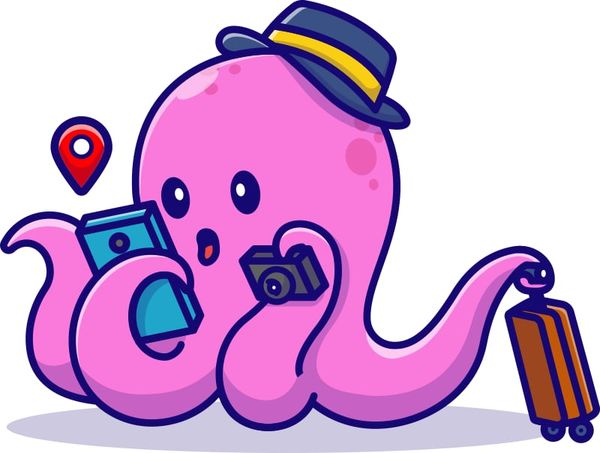
Brand marketing is different from any other marketing you do for your business. It's crucial for both your consumers and your company. But why is it so important?
The consumer wants to find products and services that meet their needs. But they would rather do that with a company that resonates with their values and interests. That's where brand marketing comes in.
Here are three main reasons why brand marketing is important for any organization:
If you're looking to establish brand identity and recognition, brand marketing is the key. Consistent brand marketing will keep your brand at the top of your consumer's minds.
There are various strategies brands use to establish a coherent identity to the public. Some of these include:
Logo and visual elements: Your logo and visual elements like color scheme and design create a distinct and memorable brand identity. Keeping these elements consistent will make your brand instantly recognizable.
Consistent brand messaging: A clear brand message reflects your brand's values, mission, and personality. Consistency in messaging across your touchpoints reinforces your brand identity.
Storytelling: Brands often use storytelling to resonate with their consumers on a personal and emotional level. The most memorable adverts often share the brand's history, vision, or success stories, rather than promoting their products.
Content marketing: Sharing valuable and relevant content helps to reinforce your brand's authority in its industry.
Ever heard the term 'brand loyalty'? That's what this is all about. Brand marketing helps to build trust and loyalty, through repetition of your message and consistency in your values.
You're looking to build an emotional connection - one that prompts consumers to choose you over your competitors. Like any relationship, you need to nurture this bond to keep it strong.
This is done through consistent marketing of your brand across multiple channels, with a consistent message throughout. Every print ad, blog post, jingle, or billboard must all drive home that sense of familiarity they can depend on.
Brand marketing drives business growth and value by highlighting how you differ from your competitors. If your target audience sees you as more reliable, more trustworthy, more consistent, and more aligned with their values, they'll choose you.
This applies even if your product or service is priced higher than your competitors' products or services. It's not always about the price, or even the experience. It's about how your brand makes consumers feel, even at the subconscious level.
And how do they respond to these feelings? They respond with their purchasing power. This is how clever branding boosts sales, ultimately driving business growth and value.

Here are our eight easy steps for creating a brand marketing strategy that delivers results!
The first step is to define your brand identity. Your brand identity is crucial as it conveys the personality of your business.
To create a brand identity, you need to have a thorough understanding of your organization's vision, mission, and values. Clearly define your brand's purpose and create an identity that mirrors it.
What kind of personality traits do you want to showcase? Do you want to be seen as professional and polite? Perhaps familiar and comforting is the vibe you're going for? Or exciting and daring?
Ensure that your personality resonates with that of your target audience. Their age group and interests or cultural norms will usually give you the best insights into what direction your brand identity should go.
Your visual identity - including logo, color scheme, and design - and messaging across communication channels must consistently reflect your brand identity.
You need to know your target audience if you want to promote your brand to them. What are their interests? What type of marketing appeals to them?
What attracts Millenials will not necessarily do the same for Gen X. Know who your customer is. Your marketing materials should meet their needs, and speak to their desires.
A good way to get to know your target audience is to create detailed buyer personas. Create profiles of the various segments of your target market. Consider their demographics, preferences, needs, and pain points. Research what they do on a daily basis - what do they do for work? What hobbies do they enjoy? Where do they like to go?
Knowing your target audience will help you market your brand in the right way, to the right people, on the right channels.
Researching your competitors is an essential step in brand marketing. It will help you identify gaps in the market, allowing your brand to offer a solution. You will be able to position your brand in a way that addresses a problem your competitors have not considered.
Knowing your competitors will help you discover what sets your brand apart in the market. This will help you formulate your USP (unique selling proposition).
Researching your competitors will also give you valuable insights into their target market, which will likely be the same as yours. Analyzing their consumer base will help you discover their preferences, pain points, and expectations. This will help you market your brand to the right audience more effectively.
However, be careful to avoid unintentionally mimicking your competitors' intellectual property. What you are aiming for is branding inspiration, not appropriation. Always conceptualize fresh ideas based on your research.
Every brand has a core message and oftentimes an intriguing history. You need to convey these in your marketing, sometimes without words. What's your brand story? If you had to sum up your brand in one or two sentences, what would they say? What about one or two words? Or an image?
Make notes of these, and see what you come up with. Every brand has its own story to tell. Is your brand the result of an interesting rags-to-riches tale? Have you built on the success of a single product that just took off? How has your brand impacted people's lives?
Incorporating this into your messaging will help you resonate with your audience on a deeper level.
It's time to design your brand identity. Take everything you learned in steps 1 to 4 above, and put them to work for you. Create a style guide containing the traits you want to showcase with your brand. You must develop a unique visual identity, with a logo, color palette, and slogan or tagline.
Your logo is a pictorial embodiment of what you do or what you stand for. Its shapes, imagery, and colors all play a role in this. Remember, this logo will serve you for a long time and it will represent you everywhere. Choose something that will look good on everything from product packaging to media.
Your tagline, similarly, must resonate with your target audience. Avoid lengthy wording, overly complex terminology, or slang that may soon fall out of use. Choose words that are confident and speak to potential customers about your brand, as succinctly as possible.
Next, you need to choose your marketing channels. Don't rush through this step - it's not as simple as it looks at first glance!
There is a wide variety of marketing channels to choose from. Online marketing channels include social media, email marketing, content marketing, and influencer marketing. Traditional marketing channels include television and radio advertising, billboards, print ads, live activations, and public relations. The channels you choose should be based on what your target audience resonates with.
The demographic you're targeting will have various preferred communication platforms. For example, if your target audience is Gen Z, they are more likely to use Instagram, whereas older demographics prefer Facebook. Does your target audience listen to the radio? Which station? Which public spaces do they frequent? Do your research!
Many studies have been done on the preferred channels for each age group, so start there. For best results, don't focus solely on one marketing channel.
Creating a content plan doesn't have to be stressful. You just need to be consistent about it. Create a content schedule that works for you, and stick to it. Consumers can be very fickle and are easily distracted. Without continuous content, you stand to lose their attention, fast.
Fortunately, as your brand becomes more recognized and gains a loyal following, you'll find it easier to retain these customers. But with so much competition for their interest (and their hard-earned dollars), you can't afford to fall behind in the content game.
Content takes many forms. It can be a blog post, a video, a social media post, or a print ad. More than likely, it will incorporate all of these and much more. These are your digital assets, and they provide the foundation for a solid campaign.
Lastly, learn to implement, measure, and evolve. Take action and implement your brand marketing strategy. Measure its performance regularly to determine if you're getting a good ROI. Evolve with your business and your brand, making the necessary changes when you see they are needed.
A reduction in interest can quickly lead to a slump in sales, but it's possible to repair both of these, with clever marketing. Think about how many brands have made astonishing comebacks, even after bad press and scandals that should have spelled doom for their businesses.
No brand marketing strategy is ever complete. It's always moving you toward or away from the success you're hoping to attain. Stay up-to-date with the latest trends, and keep your marketing plan consistent but always relevant to the changing times.
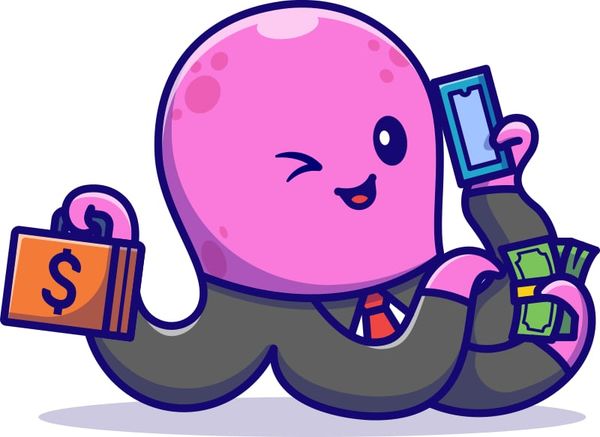
No matter where in the world you are, you've probably heard of the American multinational corporations, The Coca-Cola Company and Procter & Gamble (P&G). You'll also likely be familiar with Dove, a popular personal care brand owned by the London and Rotterdam-owned consumer goods company, Unilever.
What has led to their great success? Sure, they own some of the biggest-selling brands on the planet. But like any other company, no one would know about them if it weren't for advertising.
The Coca-Cola Company, Procter & Gamble, and Unilever's brands and products are so well known, thanks to their clever and engaging campaigns. Here are three examples of their brilliant brand marketing.
The Coca-Cola ‘Share A Coke' campaign involved swapping out three of its iconic logos on 20-oz. bottles for the 250 most popular first names among American teens and Millennials. It gave young people the opportunity to ‘share a Coke' with a friend, with their names on the bottles.
Why was this such a powerful marketing campaign? Coca-Cola was driving home the importance of recognition amongst your peers, and the value of friendship. By ‘sharing a Coke', you were cementing those bonds.
But there was an extra element here - the labels with popular names on them. The concept of drinking a Coke with your name on it was perfect. It created a sense of connection with people, who felt that Coca-Cola recognized and valued them as customers.
In the Dove ‘Choose Beautiful' campaign, women were given the option to walk through one of two doors to a shopping center. One door was labeled 'Beautiful' and the other, 'Average'. This experiment was carried out in five major cities across the world.
Why was this such an impactful marketing campaign? Dove was driving home the message that every woman should feel that she is beautiful.
When a brand speaks to people's innermost feelings, confidence, and self-esteem, it can be a brilliant and empowering marketing strategy.
The P&G ‘Thank You Mom' ad campaign tugs at the heartstrings with an emotional homage to stay-at-home mothers around the world. It shows how their love, dedication, and care contribute to their children's successes in life.
Why was this such a heartwarming marketing campaign? It provoked an emotional response in people's hearts. This connection was felt by mothers, and people who had mothers. It reminded people of how much their moms had done for them, and how supportive they had been of them.
The deeper message hidden here was truly profound. It implied that Procter and Gamble, through its detergents, personal care products, health products, medications, and baby products, helped Mom every step of the way.
At Razuna, we know just how important brand marketing is. This is why we offer you a brand asset management platform with a difference.
Our cloud-based brand asset management tool is the most affordable digital asset management for small businesses. It allows you to streamline all your brand marketing processes by keeping your brand assets organized but immediately accessible.
So choose the platform that lets your marketing team collaborate, manage, and share your digital media library with greater ease than ever before. Register for your free account today!

COLLECT+ is a productivity tool that helps you save and share everything you find on the web. It is built into the Razuna digital asset management platform.
Read now
These 18 tips for efficient photo organization are the best strategies for every marketer. Learn how to keep your digital images organized and accessible.
Read now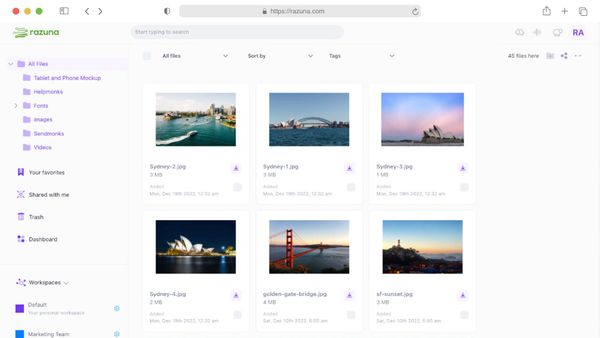
A digital asset library software organizes all digital assets in one place. But which one is the best? Here are the top 8 asset library software choices.
Read now
The latest update to our Digital Asset Management system, is focused on giving more power and flexibility to control user permissions, file, and folder access.
Read now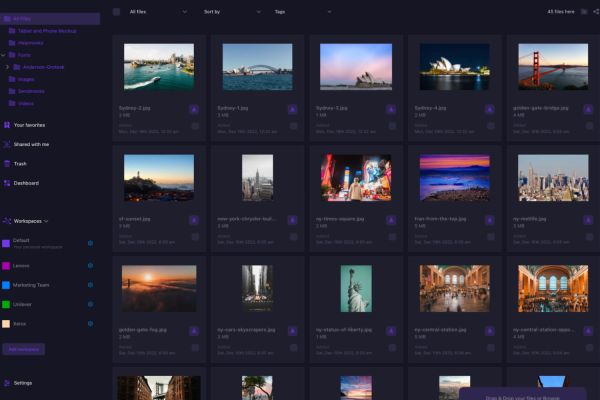
(each free accounts comes with 500 GB space)
